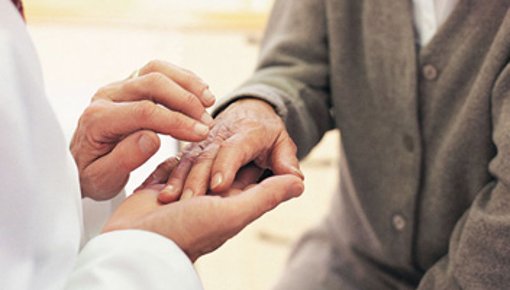D'Angelo K, Sutton D, Cote P et al. The effectiveness of passive physical modalities for the management of soft tissue injuries and neuropathies of the wrist and hand: a systematic review by the Ontario Protocol for Traffic Injury Management (OPTIMa) collaboration. J Manipulative Physiol Ther 2015; 38(7): 493-506.
Deutsche Gesellschaft für Handchirurgie (DGH), Deutsche Gesellschaft für Neurochirurgie (DGNC). Diagnostik und Therapie des Karpaltunnelsyndroms (S3-Leitlinie). AWMF-Registernr.: 005-003. 2022.
Du J, Yuan Q, Wang XY et al. Manual Therapy and Related Interventions for Carpal Tunnel Syndrome: A Systematic Review and Meta-Analysis. J Integr Complement Med 2022; 28(12): 919-926.
Healy A, Farmer S, Pandyan A, Chockalingam N. A systematic review of randomised controlled trials assessing effectiveness of prosthetic and orthotic interventions. PLoS One 2018; 13(3): e0192094.
Huisstede BM, Hoogvliet P, Franke TP et al. Carpal Tunnel Syndrome: Effectiveness of Physical Therapy and Electrophysical Modalities. An Updated Systematic Review of Randomized Controlled Trials. Arch Phys Med Rehabil 2018; 99(8): 1623-1634.
Karjalainen TV, Lusa V, Page MJ et al. Splinting for carpal tunnel syndrome. Cochrane Database Syst Rev 2023; (2): CD010003.
Mao B, Li Y, Yin Y et al. Local corticosteroid injection versus physical therapy for the treatment of carpal tunnel syndrome: A systematic review and meta-analysis of randomized controlled trials. Asian J Surg 2024; 47(1): 89-99.
Nunez de Arenas-Arroyo S, Cavero-Redondo I, Torres-Costoso A et al. Short-term Effects of Neurodynamic Techniques for Treating Carpal Tunnel Syndrome: A Systematic Review With Meta-analysis. J Orthop Sports Phys Ther 2021; 51(12): 566-580.
O'Connor D, Page MJ, Marshall SC, Massy-Westropp N. Ergonomic positioning or equipment for treating carpal tunnel syndrome. Cochrane Database Syst Rev 2012; (1): CD009600.
Page MJ, Massy-Westropp N, O'Connor D, Pitt V. Splinting for carpal tunnel syndrome. Cochrane Database Syst Rev 2012; (7): CD010003.
Paraskevopoulos E, Karanasios S, Gioftsos G et al. The effectiveness of neuromobilization exercises in carpal tunnel syndrome: Systematic review and meta-analysis. Physiother Theory Pract 2023; 39(10): 2037-2076.
Trillos-Chacón MC, Castillo MJ, Tolosa-Guzman I et al. Strategies for the prevention of carpal tunnel syndrome in the workplace: A systematic review. Appl Ergon 2021; 93: 103353.
IQWiG health information is written with the aim of helping people understand the advantages and disadvantages of the main treatment options and health care services.
Because IQWiG is a German institute, some of the information provided here is specific to the German health care system. The suitability of any of the described options in an individual case can be determined by talking to a doctor. informedhealth.org can provide support for talks with doctors and other medical professionals, but cannot replace them. We do not offer individual consultations.
Our information is based on the results of good-quality studies. It is written by a team of health care professionals, scientists and editors, and reviewed by external experts. You can find a detailed description of how our health information is produced and updated in our methods.

